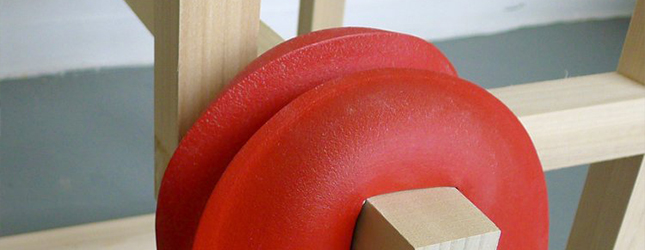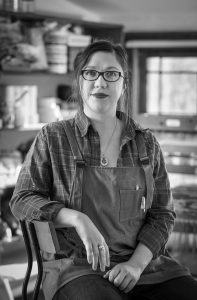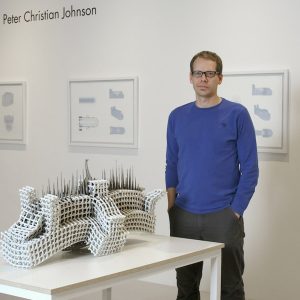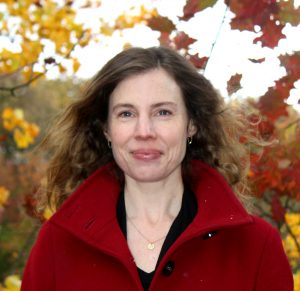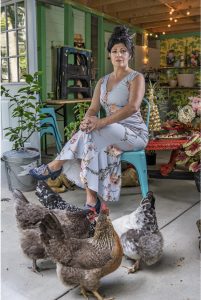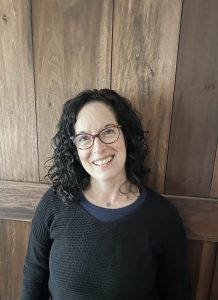Figurative/Abstract
March 18-May 15 in the Heights Arts exhibition space, artists Annie Becker, Peter Christian Johnson, Karin Dijkstra, Corrie Slawson, Claudio Orso, and Carmen Romine test where boundaries lie between representational study and abstract expression. FIGURATIVE /ABSTRACT explores the familiar in unfamiliar ways, referring to the recognizable as a foundation from which new ideas are born. The artists of FigurativeAbstract are local to the Cleveland area, persisting with their work as reality has rapidly changed over the past few years. Subjects from daily life hold new context now. Portraying them as they meet the eye doesn’t satisfy the intentions of artist Peter Christian Johnson, who remarks,
“My work explores the tension between balance and collapse, between precision and failure. It’s a meditation on entropy that uses architecture as a foil to examine the dichotomy of beauty and loss. I am interested in transformation, which is expressed in both destruction and growth.”
When is a mountain not a mountain? There are immediate associations we make when we behold them.Figuratively, the impression mountains have in art can be described as majestic and may evoke a sense of wonder. To Carmen Romine, a mountain can be more like the tip of an iceberg. Beneath the surface of her piece, The Ridge Line, there’s a process and deliberate choice of materials that carry deep meaning. Says Romine,
“I make abstract landscapes that investigate ideas behind technology advancing and transitioning from paper to digital devices. By using paper as a material, I intend to draw from its symbolism to create a sense of touch and human presence for what could become an ancient tool for culture and communication. The work is fabricated through heavily process-driven steps of repetition–cutting, crumpling, piecing and gluing.”
Viewers of this exhibition can expect color, form, scale and any other tool at an artist’s disposal being used to distort clarity, provoking the senses to seek new answers. Questions one may not normally consider are posed in these abstract works tangled with figure. Regarding the purpose for mingling figurative reference with abstraction, Helen Liggett, curator states,
“In this exhibit, we assume figurative and abstract art are porous categories and ask how contemporary artists navigate the territory”
THE ARTISTS
CARMEN ROMINE
My work explores human connection and identity through a relationship with the natural environment. I primarily work with paper, natural dyes, botanicals, paint, and other mixed media. I’m inspired by rural surroundings that form simple shapes of soil lines in a large field, water currents, and how mountain ranges fade into the distance. The views are ongoing and continuous like the natural cycles of time.
I make abstract landscapes that investigate ideas behind technology advancing and transitioning from paper to digital devices. By using paper as a material, I intend to draw on its symbolism to create a sense of touch and human presence for what could someday become an ancient tool for culture and communication. The work is fabricated through heavily process-driven steps of repetition—cutting, crumpling, piecing, and gluing.
I view these creations as metaphorical landscapes like pages in a book, the compositions are incremented into impressionable units that become accumulative, rhythmic, drifting, and ultimately dream-like. My work is tactile and intended to create the feeling of a physical shared experience, while delivering a quiet presence that reflects a meditative quality in a world that is always on and so loud.
PETER CHRISTIAN JOHNSON
My work explores the tension between balance and collapse, between precision and failure. It is a meditation on entropy that uses architecture as a foil to examine the dichotomy of beauty and loss. I am interested in transformation, which is expressed in both destruction and growth. Much of my work involves creating complex porcelain structures that are encouraged to to warp or collapse in the strain of the firing. They expose the relationship between soft and hard, the fluidity of a membrane, and the moment of intersection between these contrasting elements. Ultimately they are a metaphor for the human condition, paradoxically both broken and at times beautiful.
KARIN MARLEEN DIJKSTRA
Karin Marleen Dijkstra is a watercolor artist who draws inspiration from music and nature, from mythologies and fairy tales, and is particularly influenced by the paintings of the Golden Age Illustrators. Her work seeks to capture the intensity of a child’s way of experiencing the world and how that echoes into adulthood. She hopes not so much to generate a sense of nostalgia but to allow for the momentary immersion of the adult self in that magical childhood sensory world.
CORRIE SLAWSON
Corrie’s work explores forms and narratives related to social and environmental equity. She analyzes overarching patterns in development, population loss, land-use and climate change through printmaking, painting, photography, performance and drawing. The imagery is garnered from personal experiences with collaged elements. Visual references to history related to land-use are presented in the context of imperiled with decision-making stuck in a cycle of sprawl and divestment.
CLAUDIO ORSO-GIACONE
As a child in my Italian hometown I remember participating in the carnival parades that celebrate the beginning of the Christian Lent, and I hold a fond memory of dressing in costume and being on floats proceeding among cheering crowds through the main street. The joyous awe of the children witnessing such creative madness stayed with me to this day, when i brought back the parade to Oberlin. For one edition we decided to make cardboard masks for all the hundred and fifty kids in the school, and for that purpose we used poster board following the directions of a Seventies craft book by Michael Grater. This gigantic production opened my eyes to the magic that can be done with staples and glue guns, and the next year we started working with recycled cereal boxes, soda can packaging and six-pack containers. Since most of my artwork is monochromatic, matching colors and forms became an obsessive liberating task for me. It was an honor to have Robin Vanlear coming to see the puppets I made for an opera, and even a greater honor to be invited to that landmark event that she had created. Once under the Parade big tent, I got to meet and observe in action the truly amazing group of artists that make the magic happen.
As I look at the work done, it appears evident to me the influence that the only art history class I truly loved had on me: it was African Art, was taught at Mesa College by the great scholar Barbara Blackmun, and made me understand the alchemic power of commitment of making masks. I am overjoyed at the thought that somewhere in the memory of many children there is a moment in which they saw some of the work I have done.
ANNIE BECKER
I love rusty, metal junk. Like a kid in a candy store, looking at it actually makes me happy. How the colors change and combine. How they move through the piece creating an intense overlay, the patina adding a spectacular dimension of character. And the pieces below the rust and patina? Solid, imperfect, heavy, historical, advertising with a story to tell. Finding the right combination of weights, shapes, colors and character takes contemplation and a bit of a different perspective. But when it all comes together, it’s no longer junk — it’s a treasure.


